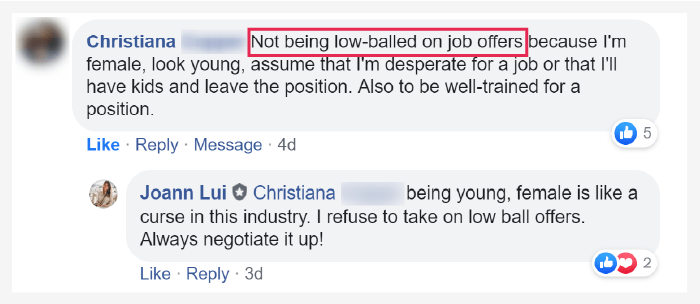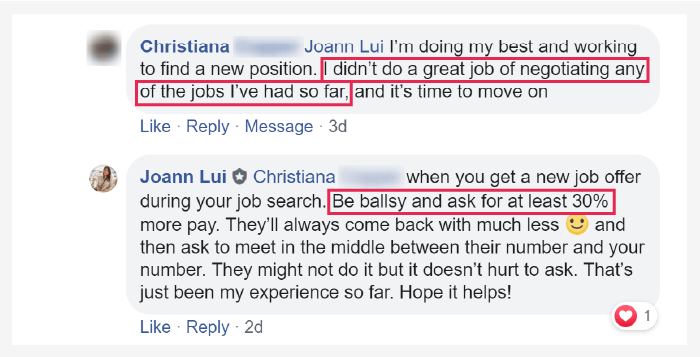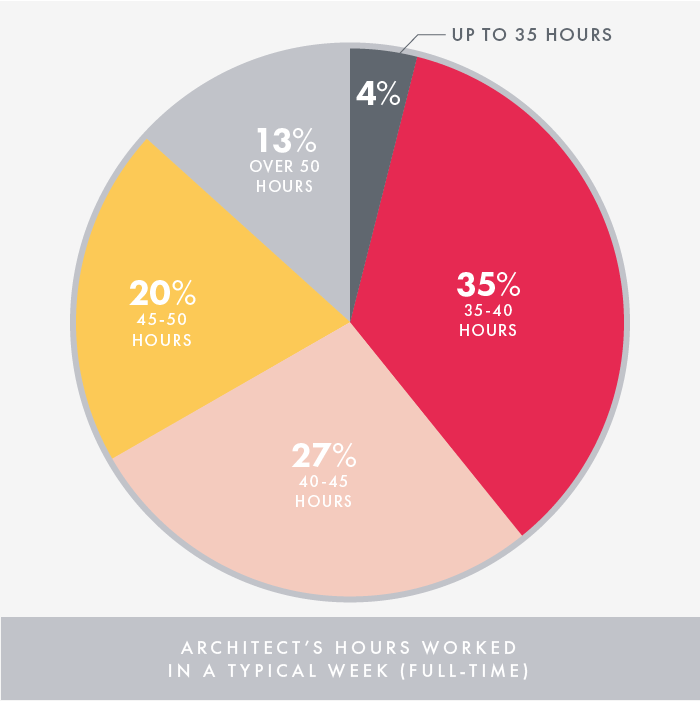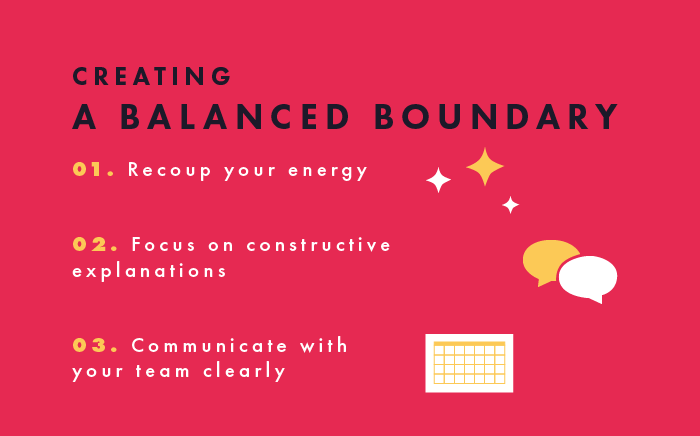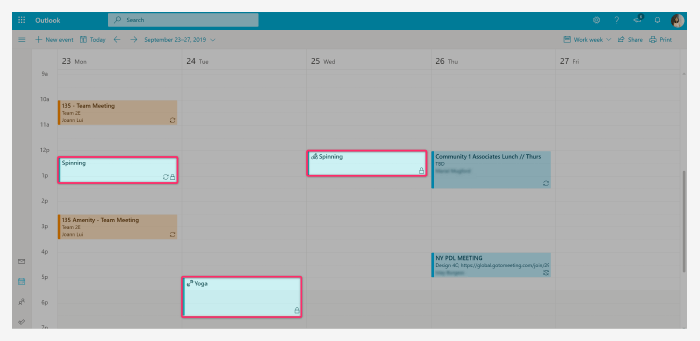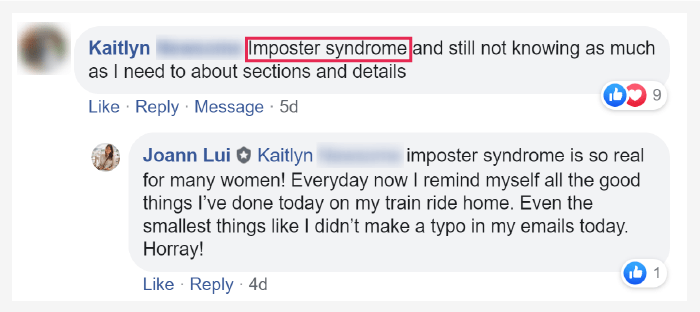How to be Taken Seriously at Work
Today I’m going to show you the strategies I used on how to be taken seriously at work.
According to the Women in Workplace report in 2018, 36 percent of all women feel that they are questioned in their area of expertise.
31% of them feel that they need more evidence to prove their competence than others do.
And as a young woman architect? It seems like every day we struggle with gaining respect at work.
But it’s not impossible.
After implementing these 3 strategies, I managed to get a promotion at work and am now leading multiple projects despite the fact that:
I’m a young, introverted, Asian, female architect.
I suck at talking in general let alone networking.
I spend 3+ hours a day commuting to and from work every day.
And in this step-by-step process, I’m going to show you exactly how to be a successful woman in the workplace.
Signs You're Not Respected at Work
There are very obvious signs that you’re not respected at work.
Are you frustrated that no one listens to you at meetings - with clients or even your own colleagues?
When you’re asking the contractor to fix their mistakes, does it seem like they’re just brushing it off?
Do people only talk directly to the male intern standing next to you and ignoring you who’s the actual project architect?
Are you being low-balled on job offers like Christina in our Women Architect Collective Facebook group just because you're a young female professional?
While over the past couple years the workplace culture has shifted to be more inclusive and respectful, there seems to be a stigma in architecture industry that still hasn’t gone away.
I’ve, in many instances, trained and mentored other male team members that get paid more than me.
I’ve been told I didn’t get a raise because “women are usually forgotten in these conversations”.
I’ve been talked over by others many times just because of my soft little girl voice.
Frustrated? Yes!
Can we get out of it? Together we can.
How Do You Get People to Take You Seriously at Work
The road to gaining respect wasn’t easy.
Actually, if anyone tell you it’s so easy to grow your career in general, they’re just lying to you.
It took me years to understand what’s going on in the workplace and took me another couple years to learn what I can do to solve the problem.
I used to work days and nights to prove that I can do it better than men.
I used to get paid less than my male colleagues at the same or even less level.
I used to not be able to get my opinions across at meetings at all.
But one day it all changed. Because of Mitts.
Mitts is a very talented architect and my best friend at work.
She was a super hardworking and essential member of our studio.
She was always picking up the slack from other members in her team and had to stay late every day to help on deadlines.
But she was always in the background, working days and nights, quietly.
Over time, she got frustrated with the position she was stuck in.
We always used to complain about how much it sucks to be a woman in a male-dominated industry together.
Why did we work so hard, but didn’t seem to get recognized for it?
So after a while, she decided to quit.
That was a sad day. For me. And our team.
After she quit, I decided that if I’m going to stay, I won’t just stop at “it sucks”.
Instead, I asked myself, “What can I do to change this?”
So I started making intentional changes for my career.
Like negotiating at all my job offers when I was looking for a job.
But once I got my dream job, these strategies not only let me be taken more seriously, but it also helped me:
Get promoted at work
Receive a higher raise than I expected
Transition to lead multiple projects while doing what I love the most
Build a team that I truly enjoys working with
So now you’re probably wondering:
“I want the Get Serious Strategies to build my career! How do I start?”
Sure, here’s a breakdown of the 3-step process:
Step 1: Get into a Positive Mindset
Step 2: Set a Balanced Boundary that Gains Respect
Step 3: Overcome your Imposter Syndrome
Now let’s dive into how you can use these strategies to level up your career too.
Step 1: Get into a Positive Mindset
To be taken seriously as a young woman at work, you need to start taking yourself seriously.
YOU actually need to make it happen.
This was the hardest lesson I had to learn to find success in my career.
But also the most important.
I used to think that “it’s not fair” watching my male colleagues getting promoted.
I used to just work really hard without a real goal in mind.
I used to be very negative every day towards my job and think nothing’s going to change.
I didn’t make it happen - I just let it happen day by day.
But then I realized If I don’t actually take my own career seriously, no one will.
Of course, it’s not as easy as turning on a switch.
But you can start by some easy steps:
Stop Saying “Nothing’s Going to Change”
You’re underpaid compared to your fellow male architects but nothing is going to change, so why bring it up?
You’re overworked and staying late every day, but that’s just what happens in architecture, so why even try to fix it?
Sounds familiar?
Women are less likely than men to think that their workplaces are fair.
Mitts and I used to say this every single day.
We’d encourage each other to go ask for a raise - but follow it with a “nothing is going to change”.
As time went on, nothing changed and we suffered.
But once I started to make a change, I realize that’s not true!
When I worked up the courage to ask for a raise, I got one - bigger than I’d expect. And then...
As soon as I asked to work on something I love, I got to work on it and more.
So stop saying nothing is going to change. Because it will as long as you believe in it and take action.
Get Involved Actively
The time of being passive and hope for an opportunity is over.
Women in the workplace are stepping up and asking for what they want.
According to KPMG’s Women's Study Report, 69 percent of women are willing to proactively ask to be involved in a project.
66 percent are willing to take on a project that is new to them.
Be one of those women that make the change.
Step 2: Set a Balanced Boundary
The moment I set a boundary to my time, I felt like a breath of fresh air coming in.
According to Architectural Review, One in eight architects regularly works at least 50 hours per week as standard.
Just a few years ago, I was working 70-80 hours a week. I would go home at 11 pm and come in every single weekend.
I was so burned out that I almost quit my job.
But once I stopped working crazy overtime and set boundaries I realized:
More people respected not only my time more, but the quality of my work more.
My teams are able to step up their game and rely on me less when I’m away.
Working less gives me the head space to achieve more goals.
This is what I call a “Balanced Boundary”.
A boundary where everyone is happy that you’re taking charge of your own time.
But simply saying I want work-life balance wouldn’t take you anywhere, there are actual concrete steps you can do every day to achieve the Balanced Boundary:
Set Out Time to Recoup Your Energy at Work
Block out time on your calendar for your mental health.
It can be a 20-minute morning ritual right when you get into work.
Or a regular lunch break with your friends.
Or even a 15-minute coffee break at the Starbucks downstairs.
I personally block out an hour for lunchtime workout 1-2 times a week and an extra yoga session every Tuesday after work.
Focus on Constructive Explanations
When your boss violates your boundaries, aka giving you way too much work to do.
Explain to them why this isn’t going to work.
Don’t just say “I’m already too stressed out.” Or “I can’t do one more thing.”
Give them a constructive example of why this is less beneficial to them.
You can say, “if I spend time to work on this new thing, then we might slow down this other project.”
Or ask for more help: “if I need to take this on, then you need to give me more staff to make the schedule.”
Communicate with Your Team Clearly
The most important part of having a Balanced Boundary is communications with your boss and your team members.
You don’t have to tell the whole world that you’re spinning at 12:15 pm, but make sure you communicate with your team clearly what times you’re available to talk if an issue arises.
If you need to leave early to make it to yoga, communicate early and let them know the status of your tasks for the day.
Most people will respect you if you just be honest and tell them ahead of time.
Actually, when my boss found out that I was going to the gym at lunchtime, he applauded me for trying to stay healthy and asked me to encourage others to do the same.
Try these small steps today to achieve a Balanced Boundary that gains respect!
Step 3: Overcome Your Imposter Syndrome
What’s the biggest struggle in your career?
Imposter syndrome?
Self-doubt?
Lack of confidence?
Or if you’re like me - All of the above?
3 years out of school, my old boss told me at my annual review that my voice sounds like a little girl, so no one has confidence in what I’m saying.
I went silent. I was a shy young professional. Back in the day, it took me so much courage to even speak a word at a meeting.
So knowing that no one would listen to me simply because of my voice crushed me.
I went on constantly doubting myself at every team meeting, every consultant coordination, every client interaction.
Am I good enough to do this job?
Omg did I just say something stupid?
What if I speak up and they laugh at my little girl's voice?
But a couple of years later at another annual review, my new boss said something that changed my life.
He said
“You need to speak up more because you always have good ideas.”
So I did and it changed my career dramatically.
But I realize just saying you need to speak up at meetings don’t really help you. You know that already.
So here are a few things you can try today to overcome your imposter syndrome.
Know that You’re Not Alone
When feeling overwhelmed by self-doubt, it’s hard to remember that you’re not alone.
Even the most successful leaders (men and women) in the world can feel fear at one point or another.
Having people tell me “this is something you can do” built my confidence.
- Candy Duncan, chair of KPMG Women’s Leadership Summit
According to the KPMG Women’s Leadership Study Report, 67% of women said they need more support building confidence to feel like they can be leaders.
Before my first solo client presentation, I texted my Design Director, “I’m scared. I don’t know if I can do this.”
She, as my biggest mentor, responded back quickly, “I couldn’t even speak a word when I was young. You’re already doing so much better than I was!”
Knowing that my mentor who I look up to every day went through the same struggle as I do now put my fear in ease.
Share your self-doubt with someone you trust, in return, they’ll share stories with you that you can learn from and help you build your confidence.
If you’re looking for a community of like-minded women to support you and build your confidence, you can join the Women Architect Collective right here!
Start with the One Idea Method
You don’t have to go full-brown and become a loud person all of a sudden at every meeting.
Start by speaking up with one idea at one meeting.
One idea that you formulated before the meeting.
One idea that you have concrete reasons as to why it’s a good idea.
One idea that you have done all the research for.
One idea that when people question you, you’ve already prepared all the answers to it.
Because the biggest cause of imposter syndrome is the lack of confidence in yourself.
Getting everything prepared beforehand is the exact confidence booster you need to speak up.
After this one idea at one meeting, you’ll start to have many more ideas at many meetings.
And slowly you’ll become a non-stoppable idea machine that’s not afraid to speak up at any occasion.
Admit your Shortcomings
Admitting what we don’t know is hard as an architect who’s supposed to know everything.
So oftentimes we pretend to understand what we don’t know.
The more you impose yourself on knowing everything, the more imposter syndrome you’ll suffer from.
In fact, there’re ways to ask questions without looking stupid.
My technical director does it best. When he doesn’t know what an engineer is talking about in a meeting, he always says “I’m not so familiar with this system, can you explain to me a little more?”
When you admit that you have shortcomings and ask questions, you grow so much faster as an architect because:
You learn about a new thing that you didn’t know about from another professional in real-time.
Others start to admire you for being brave in asking questions.
You make fewer mistakes when you understand what you’re actually doing!
Now It’s Your Turn!
I hope this process helps you start getting taken seriously at work today.
Now I’d like to hear from you:
Which strategy from this post are you going to try today?
Are you going to stop telling yourself “Nothing’s going to change?”
Let me know by leaving a comment below right now.
You Might Also Like




